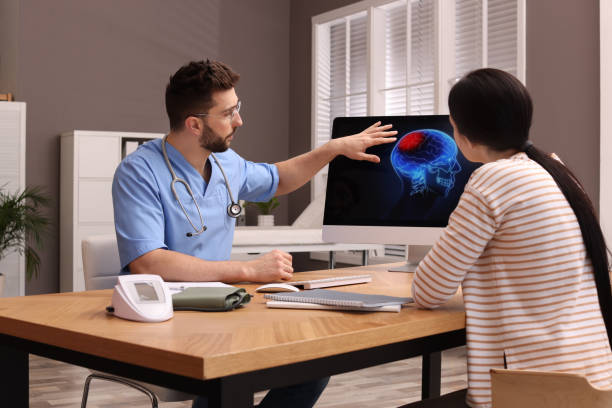Digital advertising has become a game-changer for neuropsychologists looking to expand their reach and attract clients seeking specialized services like cognitive assessments or brain injury rehabilitation. Unlike traditional marketing, neuropsychology digital ads offer precise targeting, measurable results, and cost-effective strategies to connect with high-intent clients searching for terms like “neuropsychologist near me.” By leveraging platforms like Google Ads and social media advertising, neuropsychologists can build trust, drive bookings, and grow their practice in 2025. This narrative explores how digital ads work, why they matter, and how to implement them effectively, weaving together practical steps and insights from mental health marketing trends to help neuropsychologists thrive in a competitive digital landscape.
Table of Contents
- The Power of Digital Ads for Neuropsychologists
- Understanding Neuropsychology Digital Ads
- Platforms for Effective Digital Ads
- Crafting Compelling Ad Campaigns
- Targeting the Right Audience
- Ensuring HIPAA Compliance in Ads
- Optimizing Ad Performance
- Integrating Ads with Your Website
- Measuring Ad Success
- Navigating Ad Challenges
- Frequently Asked Questions (FAQs)
- Conclusion
The Power of Digital Ads for Neuropsychologists
Imagine a potential client searching online for a neuropsychologist to evaluate memory concerns or ADHD. Within seconds, they see your ad at the top of Google or on their LinkedIn feed, highlighting your expertise and offering a clear path to book an appointment. This is the power of neuropsychology digital ads. Unlike flyers or word-of-mouth, digital ads deliver instant visibility to clients actively seeking your services, with over 70% of healthcare searches starting online, as noted in How to Make a Psychology Website. They allow neuropsychologists to target local or telehealth clients, control budgets, and track conversions, making them a vital tool for practice growth. By investing in ads, you position your practice as a trusted resource, reaching clients at the moment they need you most. For expert ad solutions, visit Mental Health IT Solutions.
Understanding Neuropsychology Digital Ads
Digital ads encompass a range of formats, from pay-per-click (PPC) ads on Google to sponsored posts on social media platforms like LinkedIn or Instagram. For neuropsychologists, these ads promote services like cognitive testing or dementia evaluations, appearing when clients search relevant keywords or browse related content. Google Ads, for instance, place your practice at the top of search results for terms like “neuropsychologist [Your City],” while social media ads engage users with visuals or videos about brain health. These ads are cost-effective, with budgets as low as $10 daily, and offer analytics to refine performance, as discussed in Therapist Marketing Guide. Understanding these options helps neuropsychologists choose strategies that align with their practice goals, whether expanding locally or offering telehealth services.
Platforms for Effective Digital Ads
Selecting the right platform is crucial for neuropsychology digital ads. Google Ads excels for high-intent searches, delivering immediate visibility when clients look for neuropsychological services, with features like Google Local Services Ads adding a “Google Guaranteed” badge for trust, as noted in Google My Business Ads: How to Boost Local Visibility. LinkedIn Ads target professionals and caregivers, ideal for sharing educational content about cognitive assessments. Instagram and Facebook Ads leverage visuals, such as infographics on brain function, to engage younger or community-focused audiences. Each platform offers targeting options to reach specific demographics, ensuring your ads connect with clients likely to book. By focusing on one or two platforms initially, neuropsychologists can maximize impact without overwhelming their marketing efforts. Explore platform strategies in Lead Generation for LMFTs.
Crafting Compelling Ad Campaigns
A successful neuropsychology digital ads campaign starts with compelling content that resonates with clients. Write concise ad copy that highlights your expertise, such as “Expert Cognitive Assessments in [Your City] – Book Today!” Include strong calls-to-action (CTAs) like “Schedule Now” to drive clicks. For Google Ads, use Google Keyword Planner to identify high-intent keywords like “neuropsychologist for ADHD testing,” ensuring your ad appears for relevant searches. On social media, pair ads with professional visuals or short videos explaining services like memory evaluations, keeping HIPAA compliance in mind by avoiding Protected Health Information (PHI). Test different ad variations to see what resonates, refining copy based on click-through rates. This approach builds trust and encourages clients to take the next step, as suggested in Why Therapists Need a Blog.
Targeting the Right Audience
The beauty of neuropsychology digital ads lies in their precision. Platforms like Google Ads allow targeting by location, ensuring your ad reaches clients in your city or telehealth-eligible regions. You can also target by search behavior, focusing on users looking for terms like “brain injury rehabilitation.” On LinkedIn, target professionals like educators or healthcare providers who may refer clients, while Instagram lets you reach specific age groups, such as adults seeking cognitive testing for aging parents. Use demographic filters to focus on clients likely to need your services, such as those aged 40+ for dementia evaluations. Regularly review analytics to adjust targeting, ensuring your ads reach high-value audiences efficiently, as explored in Practice Growth for Therapists. This precision maximizes your return on investment and drives qualified leads to your practice.
Ensuring HIPAA Compliance in Ads
HIPAA compliance is a non-negotiable aspect of neuropsychology digital ads. Never include PHI, such as client names, diagnoses, or assessment details, in ad copy, images, or landing pages, as emphasized in HIPAA Compliance for Therapists. Link ads to HIPAA-compliant landing pages with encrypted forms and secure hosting, backed by Business Associate Agreements (BAAs) for platforms like Google Ads. Avoid retargeting ads based on sensitive health data, and configure analytics to exclude PHI collection. Display a Notice of Privacy Practices (NPP) on your website to inform clients about data handling. By prioritizing compliance, you protect client trust and avoid legal risks, ensuring your ads are both effective and ethical.
Optimizing Ad Performance
To get the most from neuropsychology digital ads, continuous optimization is key. Start with a modest budget, such as $10-$50 daily, and monitor metrics like click-through rates (CTR) and cost-per-click (CPC) using platform dashboards. If an ad for “neuropsychologist [Your City]” underperforms, tweak the copy or adjust keywords to better match client searches. A/B test different headlines or visuals to identify what drives conversions, such as bookings or inquiries. Use negative keywords to exclude irrelevant searches, like “free therapy,” saving your budget for high-intent clicks. Regularly refine targeting based on analytics, focusing on audiences with the highest engagement, as noted in SEO for Mental Health Therapists. This iterative approach ensures your ads remain cost-effective and impactful over time.
Integrating Ads with Your Website
Your website is the backbone of neuropsychology digital ads, converting clicks into clients. Link ads to a dedicated, HIPAA-compliant landing page that mirrors the ad’s message, such as a page detailing cognitive assessment services with a clear booking form. Ensure the website is mobile-responsive, fast-loading, and optimized for SEO with keywords like “neuropsychologist [Your City],” as recommended in How to Make a Psychology Website. Include trust signals like client testimonials (with consent) and professional credentials to reassure visitors. Use Google Analytics to track ad-driven traffic and conversions, ensuring no PHI is collected. A seamless website experience turns ad clicks into appointments, amplifying your campaign’s success, as discussed in Mental Health UX/UI Design.
Measuring Ad Success
Tracking the success of neuropsychology digital ads provides insights to refine your strategy. Google Ads dashboards show impressions, clicks, and conversions, such as form submissions or bookings, helping you calculate return on investment (ROI). Social media platforms like LinkedIn or Instagram provide engagement metrics, including likes, shares, and link clicks. Set clear goals, like generating 10 new client inquiries monthly, and use HIPAA-compliant analytics to monitor progress without collecting PHI. Regularly review data to identify top-performing ads and adjust underperforming ones, ensuring your budget drives measurable growth, as explored in EHR Evolution in Mental Health. This data-driven approach maximizes your ads’ impact and supports long-term practice expansion.
Navigating Ad Challenges
Digital ads aren’t without challenges, but strategic planning can overcome them. Budget constraints may limit reach, so start small with Google Ads, focusing on high-intent keywords to maximize ROI. Low engagement can occur if ads feel generic, so craft personalized copy and visuals that speak to specific client needs, like “Struggling with Memory? Get Expert Testing.” Technical issues, such as ad disapprovals, can arise from HIPAA-related errors, so double-check compliance before launching. Time management is another hurdle, but tools like Google Ads Editor simplify campaign setup. By anticipating these challenges and adapting, neuropsychologists can maintain effective campaigns, as suggested in Teletherapy Platform Development.
Frequently Asked Questions (FAQs)
- What are neuropsychology digital ads?
Online advertisements, like Google Ads or social media posts, promoting neuropsychological services to attract clients. - Why are digital ads important for neuropsychologists?
They increase visibility, target high-intent clients, and drive bookings with measurable results. - Which platforms are best for neuropsychology ads?
Google Ads for search visibility and LinkedIn/Instagram for professional and visual engagement. - How do I ensure HIPAA compliance in digital ads?
Avoid PHI, use secure landing pages, and ensure BAAs with ad platforms. - How can I measure ad success?
Track clicks, conversions, and ROI using platform analytics, ensuring HIPAA-compliant data handling.
Conclusion
For neuropsychologists, neuropsychology digital ads offer a powerful way to grow their practice, connecting with clients seeking specialized care through targeted, measurable campaigns. By crafting compelling ads, optimizing performance, and integrating with a trust-building website, practitioners can enhance visibility and drive bookings while maintaining HIPAA compliance. This narrative has outlined a clear path to leverage digital ads, from platform selection to performance tracking, empowering neuropsychologists to thrive in 2025’s digital landscape. As client searches increasingly start online, digital ads are a vital investment for sustainable growth. Launch your ad campaign with Mental Health IT Solutions.







